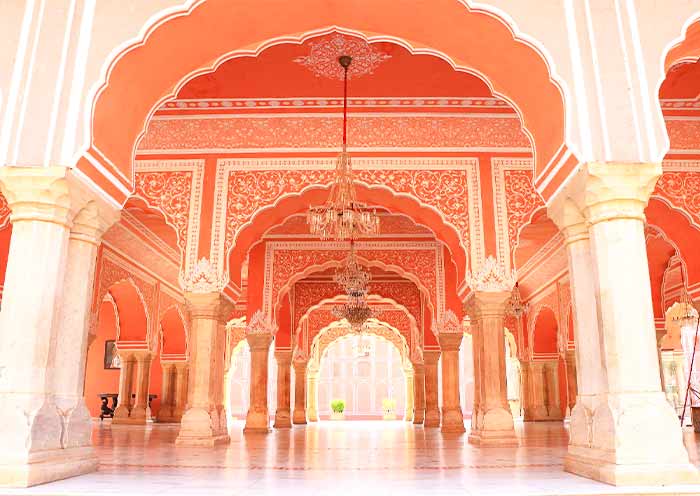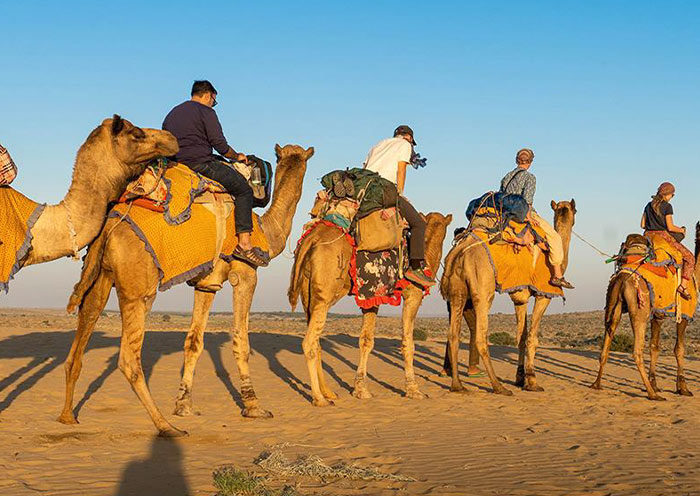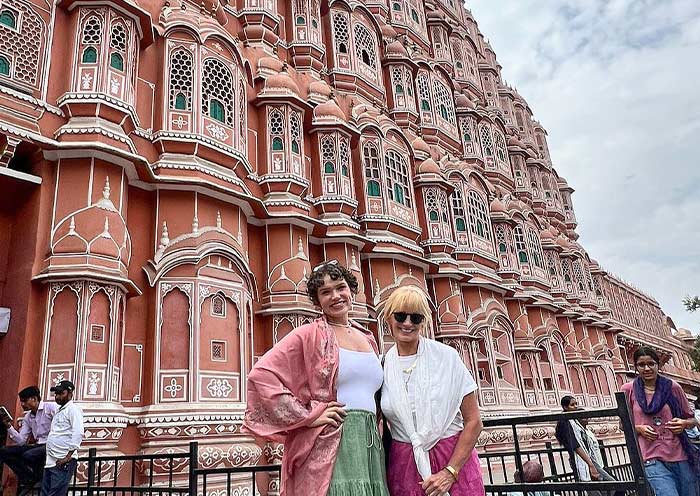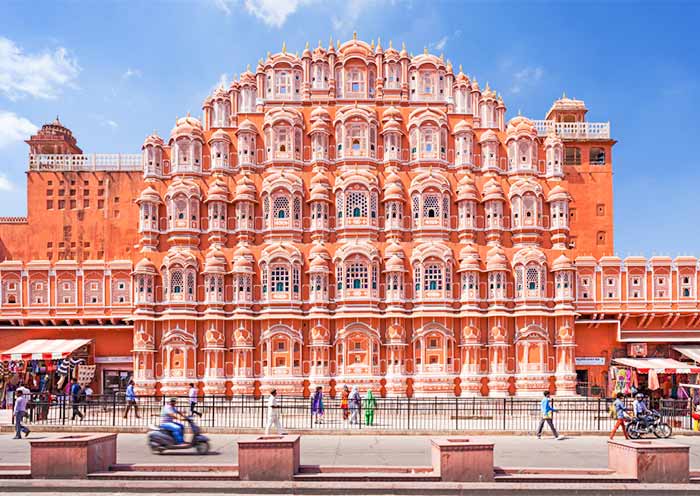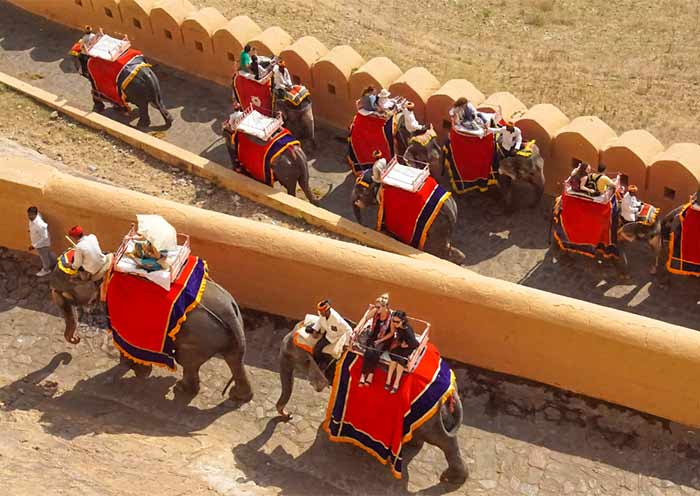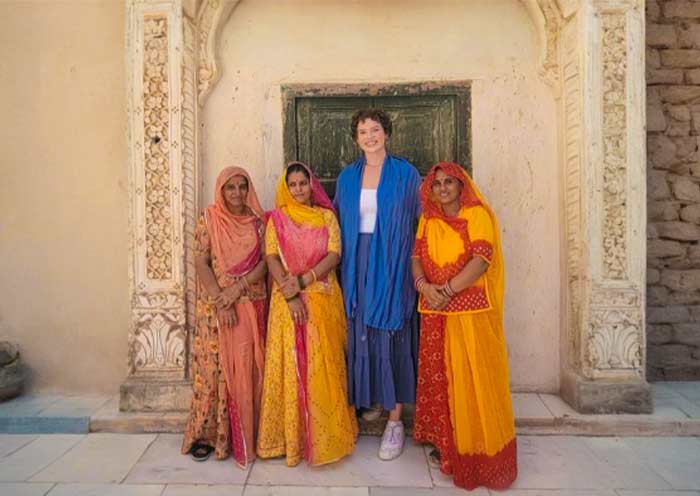Weather & Climate in India Golden Triangle
Weather Overview
The Golden Triangle, which consists of Delhi, Agra, and Jaipur, experiences 3 main seasons: summer, monsoon, and winter.
- Summer (April to June):
Summers in the Golden Triangle are hot and dry, with temperatures ranging from 30°C to 45°C (86°F to 113°F). The region can be quite arid, and the scorching heat can make outdoor activities uncomfortable.
- Monsoon (July to September):
The monsoon season brings relief from the heat but also significant rainfall. The region experiences heavy showers, which can sometimes lead to flooding. The temperatures during this season range from 25°C to 35°C (77°F to 95°F).
- Winter (October to March):
Winter is the most pleasant time to visit the Golden Triangle. The weather is mild and enjoyable, with temperatures ranging from 10°C to 25°C (50°F to 77°F). It is the peak tourist season, as the weather is perfect for outdoor exploration.


Average Temperature and Rainfall
| Delhi | Agra | Jaipur | |
|---|---|---|---|
| Summer (April to June) | 25°C to 45°C (77°F to 113°F) | 25°C to 45°C (77°F to 113°F) | 25°C to 45°C (77°F to 113°F) |
| Monsoon (July to September) | 25°C to 35°C (77°F to 95°F) | 25°C to 35°C (77°F to 95°F) | 25°C to 35°C (77°F to 95°F) |
| Winter (October to March) | 7°C to 22°C (45°F to 72°F) | 8°C to 23°C (46°F to 73°F) | 8°C to 23°C (46°F to 73°F) |
| Rainfall | Minimal | Minimal | Minimal |
Best Time to Visit the Golden Triangle
The best time to visit the Golden Triangle is during the winter season, from October to March. The weather is pleasant, with mild temperatures and minimal rainfall. It is ideal for exploring the historical sites, enjoying outdoor activities, and immersing oneself in the cultural experiences of the region.
However, it's worth noting that winters can get chilly, especially in December and January, so it's advisable to carry some warm clothing. Additionally, this is the peak tourist season, so popular attractions might be crowded. To avoid the crowds, consider visiting during the shoulder months of October and March.
While summers and monsoons are less favorable due to the high temperatures and rainfall, if you do plan to visit during these seasons, be prepared for the weather conditions and plan your activities accordingly.
Check to know How to Plan a India Triangle Tour>>


Best Time/Month to Visit Delhi (Capital City)
The best months to visit Delhi are February and March.
During this time, the weather is pleasant with mild temperatures ranging from around 10°C (50°F) to 25°C (77°F). February and March offer a balance between comfortable weather and relatively fewer crowds. These months are perfect for visiting Delhi's gardens, such as the iconic Lodhi Garden and Mughal Garden, and enjoying outdoor activities like picnics and boat rides. Check more details in Best Time to Visit Delhi >>
The second best months to visit Delhi are from October to January.
October and November mark the onset of autumn, offering mild temperatures and clear skies. It is an excellent time to explore Delhi's historical sites, markets, and cultural events without the scorching heat of summer. December and January bring winter to Delhi, with cool temperatures and occasional foggy mornings. While it can get chilly, this period is ideal for enjoying Delhi's street food, attending festivals like Diwali and Christmas, and experiencing the city's vibrant nightlife.
Best Time/Month to Visit Agra (Taj Mahal)
The best months to visit Agra are October and November, or February and March.
October and November mark the beginning of the winter season in Agra, providing pleasant weather with temperatures ranging from around 15°C (59°F) to 30°C (86°F). This period allows you to enjoy sightseeing without the intense heat of summer or the winter chill.
February and March mark the arrival of spring in Agra. The weather during this time is pleasant, with moderate temperatures and blooming gardens. It's an excellent time to visit the Taj Mahal and witness the beautiful surroundings in full bloom. Check more details in Best Time to Visit Agra>>


Best Time/Month to Visit Jaipur (Pink City)
The best months to visit Jaipur are October and November, or February and March.
In October and November, Jaipur experiences the transition from monsoon to winter, offering mild temperatures and clear skies. It is an ideal time to visit the city's grand palaces, forts, and bustling bazaars without the scorching heat of summer.
February and March mark the arrival of spring in Jaipur. The weather during this time is pleasant, with moderate temperatures and blooming gardens. It is a great time to witness the city's vibrant festivals, such as Holi, and explore the colorful streets of the Pink City. Check more details in Best Time to Visit Jaipur>>
Peak Season in India Golden Triangle: October to March
The peak season to visit Delhi, Agra, and Jaipur is generally from October to March. During these months, the weather is relatively pleasant, with cooler temperatures compared to the scorching heat of the Indian summer.
The peak season attracts a significant number of tourists, both domestic and international. As a result, popular tourist sites can be crowded during this time. It's advisable to book accommodations, tours, and tickets in advance to ensure availability and make the most of your visit.
During the peak season, you'll find a wide range of activities, cultural events, and festivals taking place in Golden Triangle. It's a vibrant time to explore the rich heritage, architecture, and traditions of the region.
It's worth mentioning that visiting during the shoulder months of October and March can be a good option as well. The weather is still pleasant, and the tourist crowds are relatively thinner compared to the peak months.
Overall, the months of October to March offer the most favorable weather conditions for visiting Delhi, Agra, and Jaipur, allowing you to explore these captivating cities comfortably.
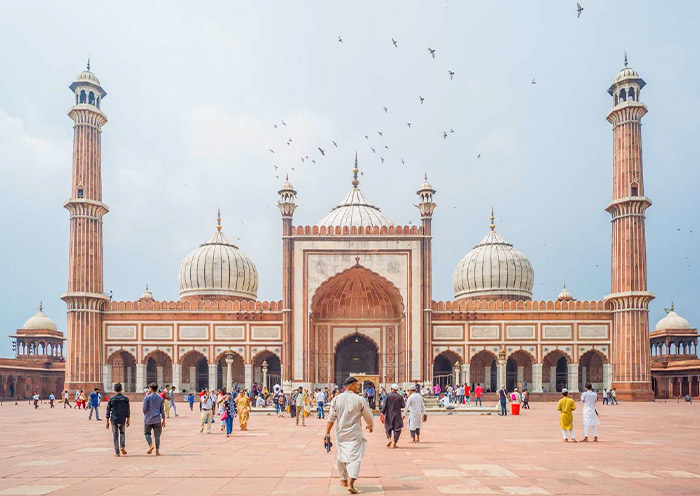

Off-Season in India Golden Triangle: April to September
The off-season to visit the India Golden Triangle typically falls between April and September. This period encompasses the summer and monsoon seasons in this region.
- April to June (Summer)
During these months, the weather in the Golden Triangle can be hot and dry, with temperatures ranging from around 25°C (77°F) to 45°C (113°F) or even higher. Exploring outdoor attractions can be challenging due to the intense heat, and it's essential to stay hydrated and protect yourself from the sun. However, this time of the year often sees fewer tourists, which means you may encounter fewer crowds and enjoy discounted rates on accommodations and tours.
- July to September (Monsoon):
The monsoon season in the Golden Triangle brings rainfall and increased humidity. While the rain can provide relief from the heat, it can also lead to occasional disruptions, such as heavy showers and limited outdoor activities. Sightseeing and visiting historical sites during monsoon showers may be less enjoyable. However, if you don't mind the rain and are looking for a more budget-friendly trip, this period offers lower hotel rates and fewer tourists.
Despite the challenges of the off-season, there can be advantages to visiting during this time. With fewer crowds, you may have a more intimate experience at popular attractions, and you can take advantage of lower prices on accommodations and flights. Additionally, some festivals and cultural events, such as Teej (Celebrated primarily in Jaipur) and Krishna Janmashtami (Celebrated in Golden Triangle), take place during the summer and monsoon months, providing unique opportunities to witness local traditions and celebrations.

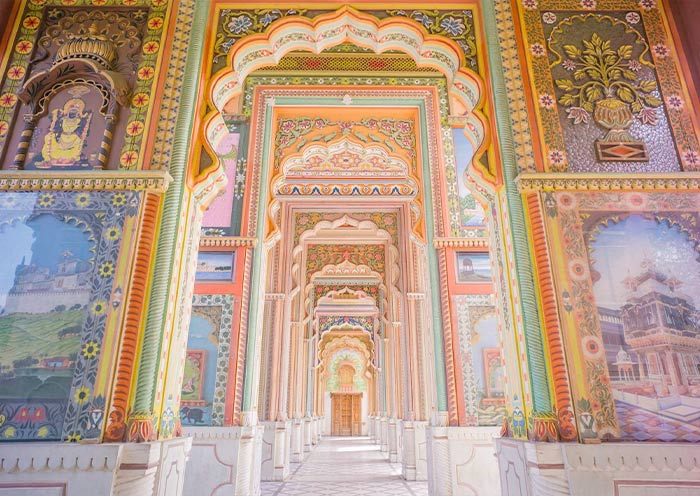
Activities and Attractions During Peak Season in the Golden Triangle
During the winter season in the Golden Triangle (Delhi, Agra, and Jaipur), there are several activities and attractions that you can enjoy. Here are some popular ones:
- Taj Mahal at Sunrise: Visit the Taj Mahal in Agra during the winter mornings to witness the breathtaking beauty of the monument at sunrise. The cool weather and soft golden light create a magical atmosphere.
- Delhi Sightseeing: Explore the historical sites of Delhi, such as the Red Fort, Qutub Minar, Humayun's Tomb, and Jama Masjid. The pleasant winter weather makes it comfortable to wander around and explore the city's rich heritage.
- Jaipur's Palaces and Forts: Discover the architectural wonders of Jaipur, including the Amber Fort, City Palace, Hawa Mahal, and Jaigarh Fort. The winter climate allows for enjoyable exploration of these magnificent structures.
- Elephant Ride at Amer Fort: Take an elephant ride up the hill to reach the entrance of Amer Fort in Jaipur. The cool winter weather makes the experience even more delightful as you enjoy the scenic views.
- Shopping in Local Markets: Explore the bustling markets of Delhi, Agra, and Jaipur during the winter season. From colorful textiles and handicrafts to traditional jewelry and spices, you can find a wide range of unique souvenirs and gifts.
- Pushkar Camel Fair (November): If your visit coincides with November, don't miss the famous Pushkar Camel Fair held in the town of Pushkar, near Jaipur. It's a vibrant festival where you can witness camel races, cultural performances, and traditional rituals.
- Diwali (October/November): Celebrate the festival of lights, Diwali, in Delhi, Agra, or Jaipur. During this time, the cities are adorned with colorful lights, and you can witness the grandeur of fireworks and enjoy traditional sweets.
- Holi (March): Experience the vibrant festival of colors, Holi, in the Golden Triangle. Join locals in spraying colored powders and water on each other, dancing to traditional music, and indulging in festive treats.
- Food Exploration: Indulge in the rich culinary traditions of the Golden Triangle during the winter season. Sample local winter delicacies like hot street snacks, traditional sweets, and warm beverages like chai (tea).
The winter season in the Golden Triangle provides pleasant weather for outdoor activities and sightseeing. It's a great time to explore the region's historical sites, indulge in local cuisine, and immerse yourself in the vibrant festivals and cultural traditions of these cities. You can check India Golden Triangle Itinerary to plan a tour to this vibrant destination.
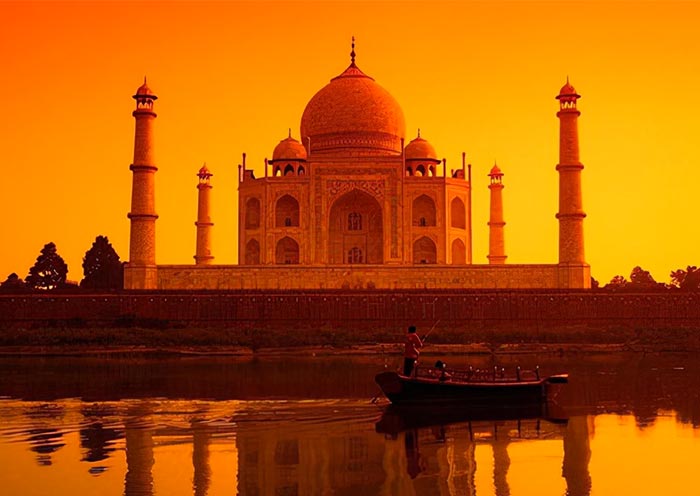
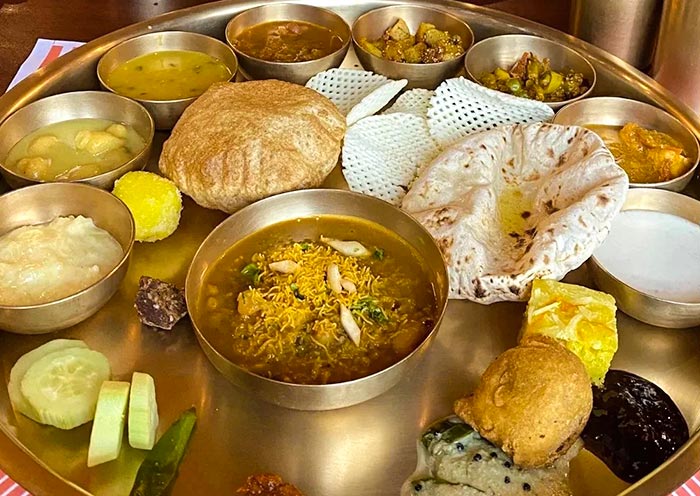
Tips for Traveling in the Golden Triangle all year round
- Check the Weather: This will help you pack appropriate clothing and gear for the prevailing conditions. Carry lightweight and breathable clothing for the summer months, and layer up with warmer clothing during the winter.
- Stay Hydrated: Regardless of the season, it's crucial to stay hydrated, especially during the hot summer months. Carry a reusable water bottle and drink plenty of fluids to avoid dehydration.
- Protect Yourself from the Sun: The sun can be intense, particularly during the summer months. Protect yourself from the harsh rays by wearing a hat, sunglasses, and sunscreen with a high SPF.
- Plan your Itinerary: The Golden Triangle is home to numerous historical sites and attractions, so prioritize the ones you want to visit. Consider purchasing tickets online in advance to avoid long queues at popular sites or you can join in an India group tour.
- Time your Visits: If you're visiting during the peak season (October to March), aim to arrive early in the morning to beat the crowds and make the most of your time at popular attractions. Alternatively, consider visiting in the shoulder season (April to September) to experience fewer crowds.
- Respect Local Customs: When visiting religious sites, dress modestly by covering your shoulders and knees. Wear loose-fitting clothing and remove shoes and hats as required. Respect local customs, follow the behavior of locals, and be mindful of cultural sensitivities.
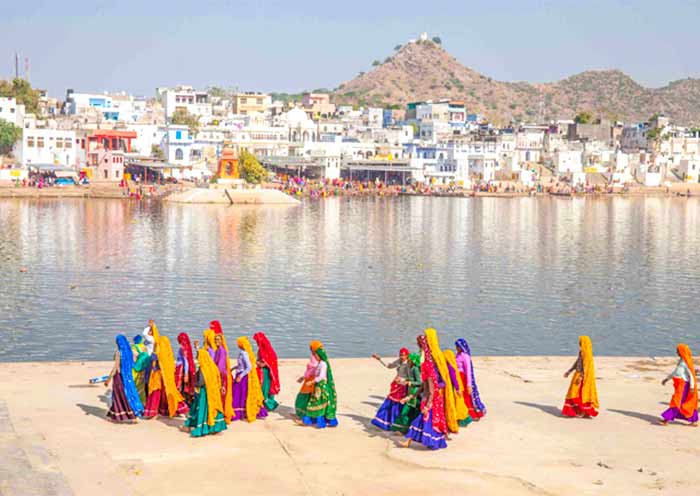
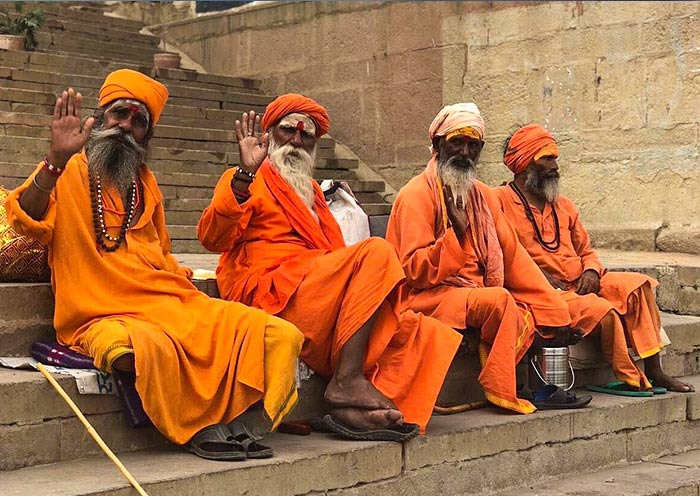
How to Plan India Golden Triangle Tours During Peak Season?
The India Golden Triangle Tour is a popular and classic travel itinerary that covers three major cities in northern India: Delhi, Agra, and Jaipur. This tour offers a glimpse into India's rich history, cultural heritage, and architectural marvels and highly recommended for first-timers in India.
The distance between each adjacent city is approximately 250-300 kilometers, with a travel time of 4-6 hours. A typical India Golden Triangle Tour takes around 5-8 days, with 3 days dedicated to transportation between the three cities and 1-2 days allocated for exploring the key attractions in each city.
Here's a recommended India Golden Triangle itinerary:
- Day 1: Arrival in Delhi
- Day 2: Explore New Delhi and Old Delhi with these top attractions: Red Fort, Jama Masjid, Chandni Chowk, Qutub Minar, and Humayun's Tomb.
- Day 3: Drive from Delhi to Agra for 5 hours. Visit Baby Taj and Mehtab Bagh after arrival.
- Day 4: Explore Agra’s UNESCO World Sites: Taj Mahal and Agra Fort.
- Day 5: Drive from Agra to Jaipur for 5 hours. Visit City Palace after arrival.
- Day 6: Jaipur Sightseeing: Hawa Mahal, Jantar Mantar, and Amber Fort.
- Day 7: Return to Delhi and departure.
- Day 8: Departure from Delhi
If you have a particular fondness for a city, you can choose to extend your stay by an additional day to explore it further. There are also train and flight options available between the three cities, but sometimes train journeys can take longer than road travel. For the sake of your travel safety, it is advisable to opt for road travel and preferably choose a tour package offered by a reputable travel agency.
With the convenience of organized tours, first-time visitors can explore the highlights of each city, including the majestic Taj Mahal, the bustling streets of Old Delhi, the royal palaces of Jaipur, and much more, all while enjoying the comfort and guidance of knowledgeable local guides. From immersing in the Mughal heritage to witnessing the grandeur of Rajput architecture, this tour provides a glimpse into India's fascinating past and present. In HOW TO PLAN INDIA TRIANGLE TOUR, you can obtain a more detailed guide for this amazing destination.

